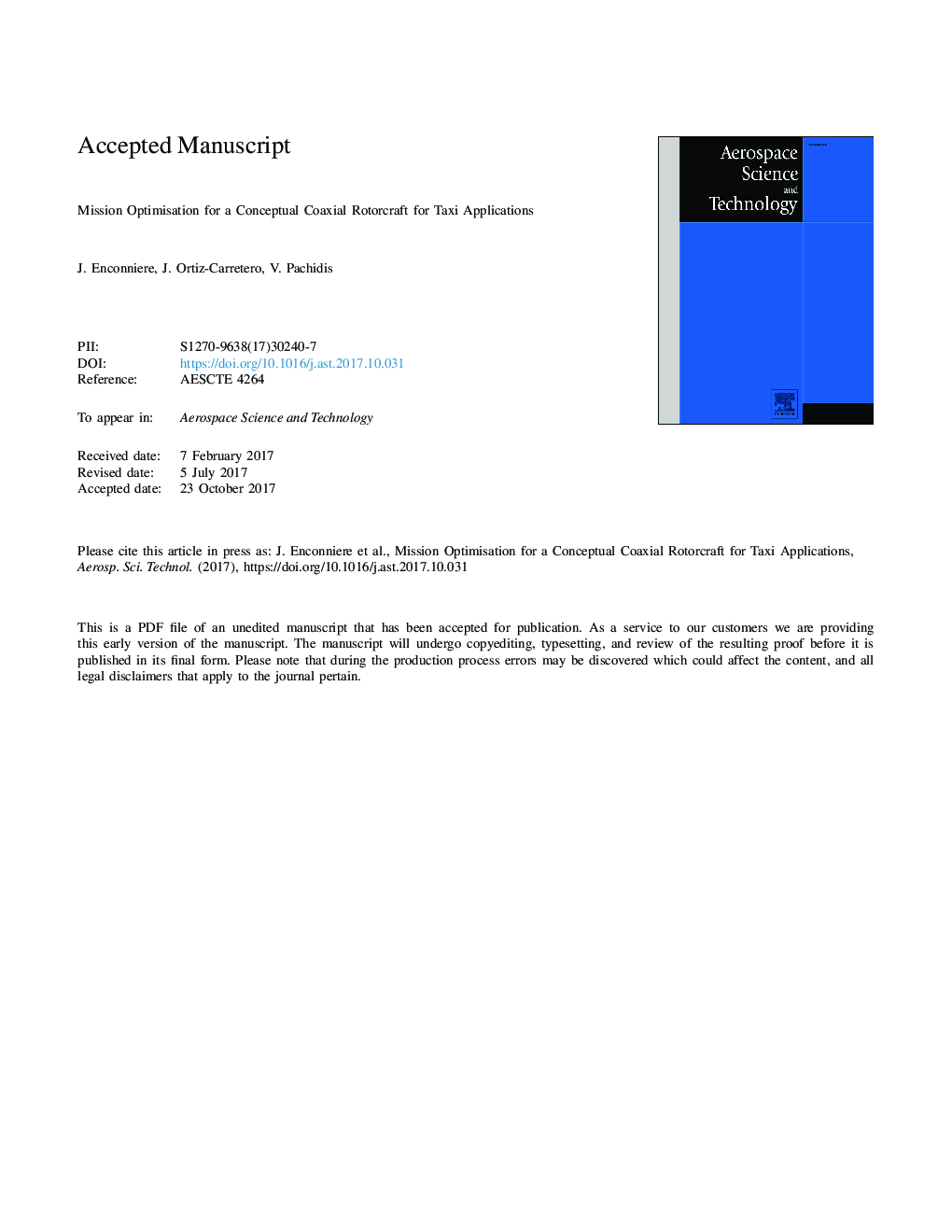| Article ID | Journal | Published Year | Pages | File Type |
|---|---|---|---|---|
| 8058199 | Aerospace Science and Technology | 2018 | 18 Pages |
Abstract
This paper presents the development and an application of a multidisciplinary methodology for the preliminary design assessment of compound coaxial rotorcraft with a counter-rotating rotor system and a rear-mounted propeller. A comprehensive optimisation strategy is deployed to evaluate the environmental and operational benefits of the aforementioned rotorcraft architecture. The code is validated against experimental data prior to the application of the methodology to the evaluation of a conceptual vehicle for intercity taxi applications. Response Surface Models (RSMs) are generated to mimic the rotorcraft performance in order to accelerate the optimisation process. The effects of the defined mission input parameters such as cruise speed, altitude, climb rate or mission length are evaluated. Pareto fronts for fuel burn, NOx emissions and mission duration are obtained. The method was applied to a hypothetical scenario of mission length ranging from 50 to 300 km. Best estimate mission scenario are selected from the Pareto fronts, providing on average 23%, 20%, and 13% simultaneous reductions in mission duration, fuel burn, and NOx emissions when compared to a conventional flight procedure. The picked scenarios coincide with the fuel optimised mission scenarios for each mission length, thus the multi-disciplinary environment was not required. Besides, an “improved” mission procedure is outlined, defining the mission characteristics independently of the mission's length. This procedure yields on average 22%, 14%, and 8% reductions in mission duration, fuel burn, and NOx emissions, respectively.
Related Topics
Physical Sciences and Engineering
Engineering
Aerospace Engineering
Authors
J. Enconniere, J. Ortiz-Carretero, V. Pachidis,
